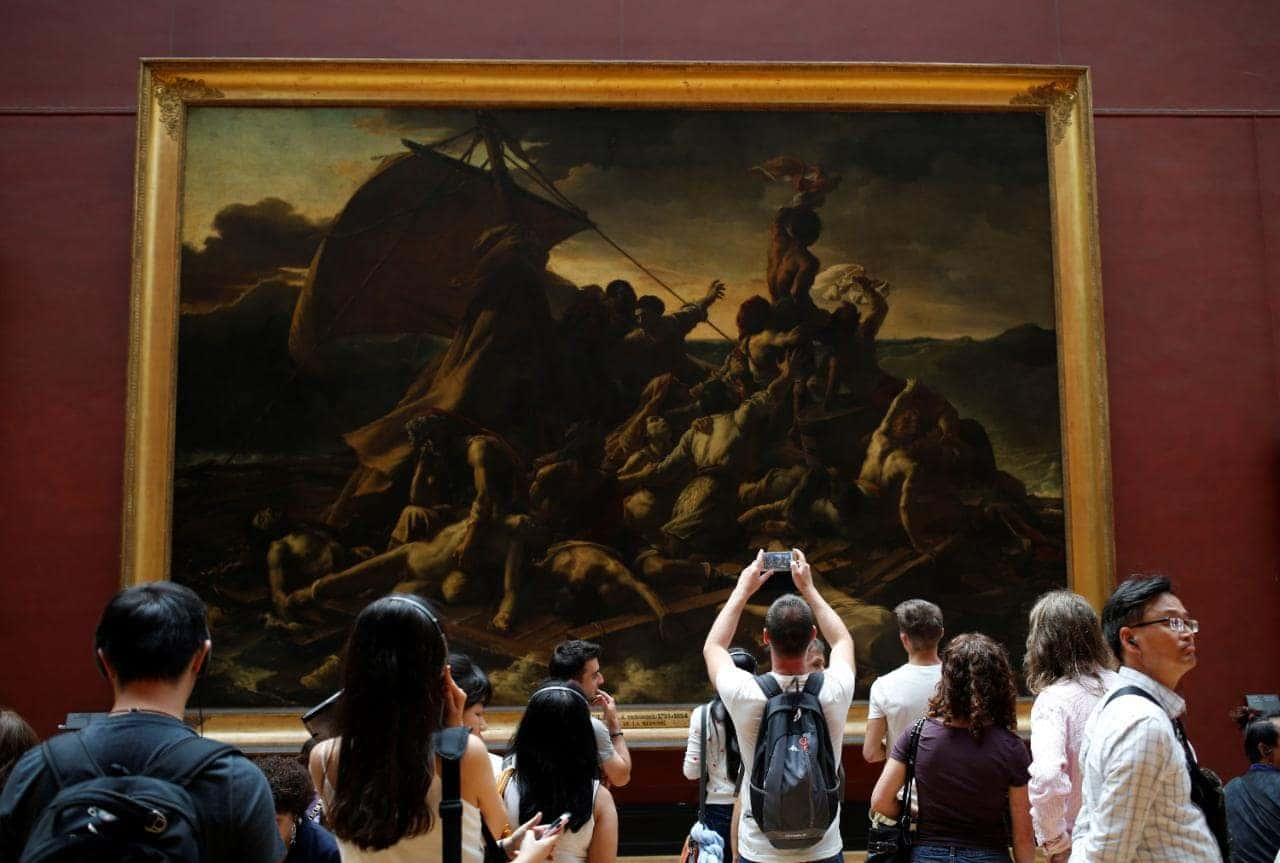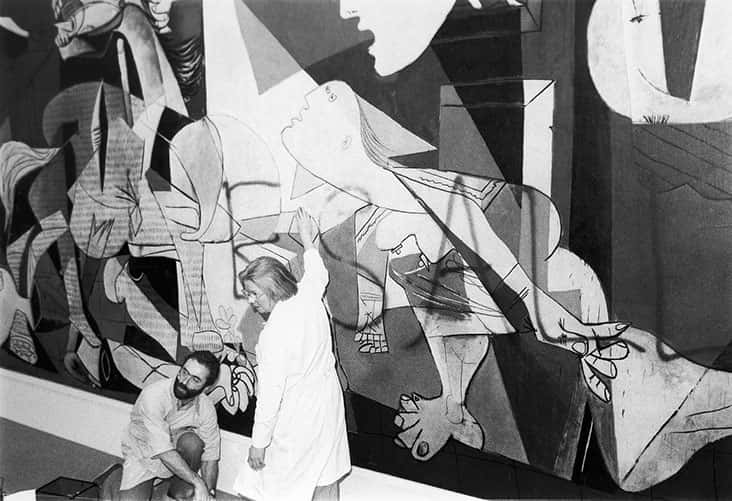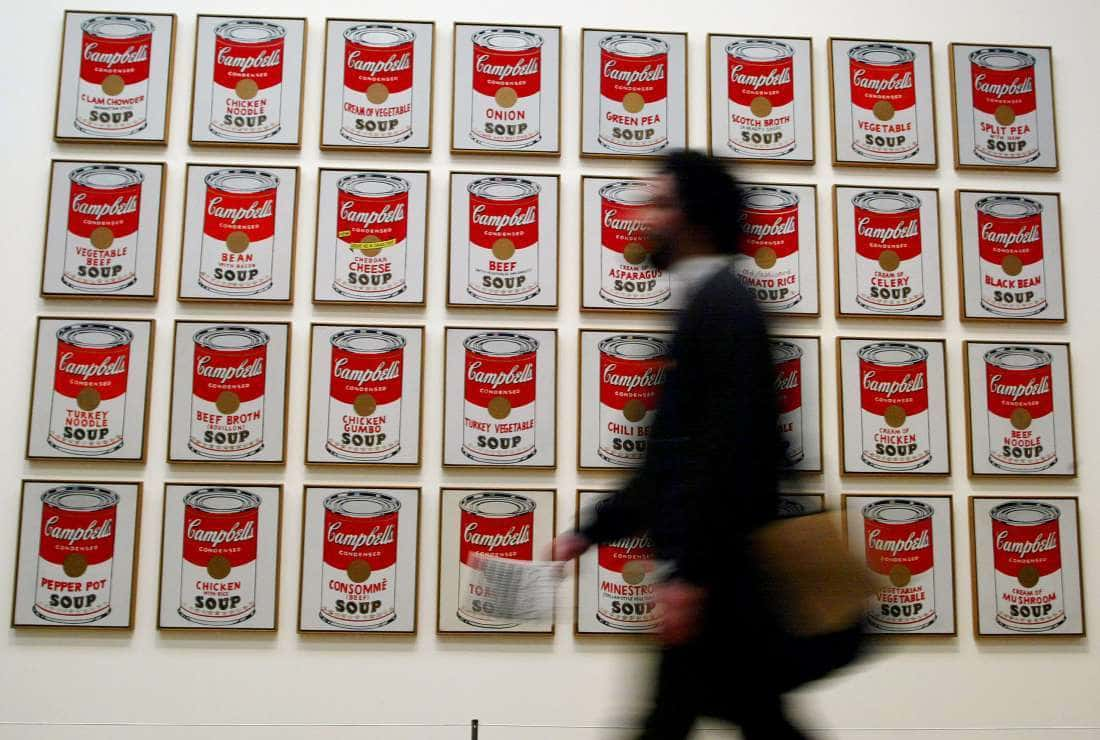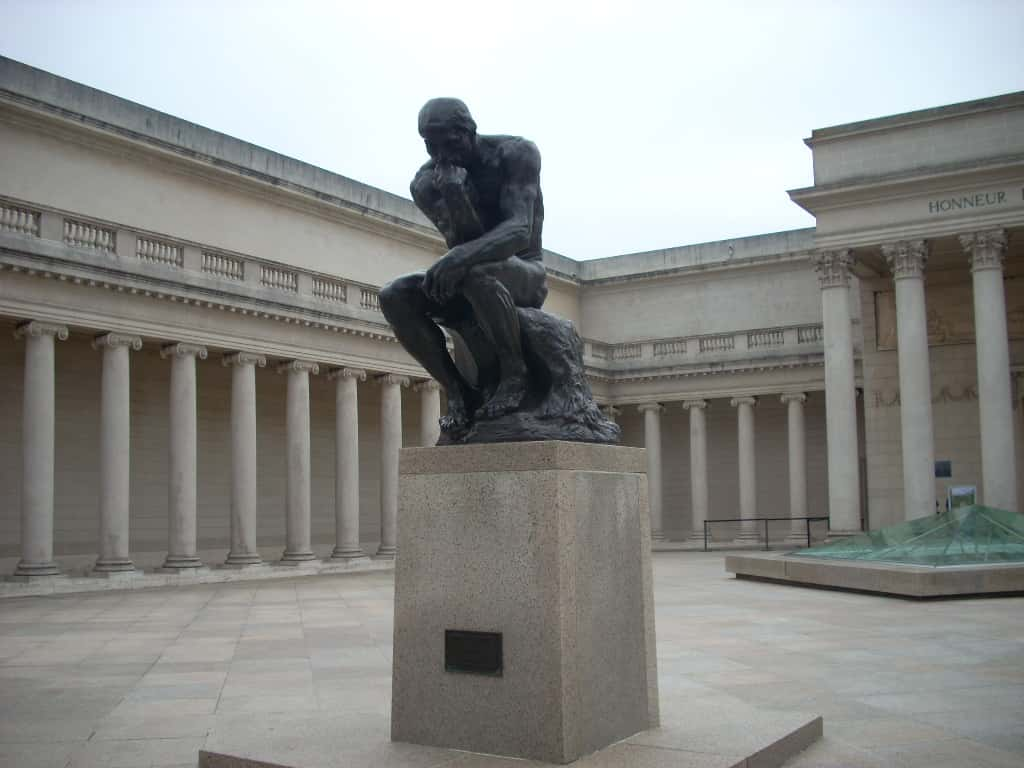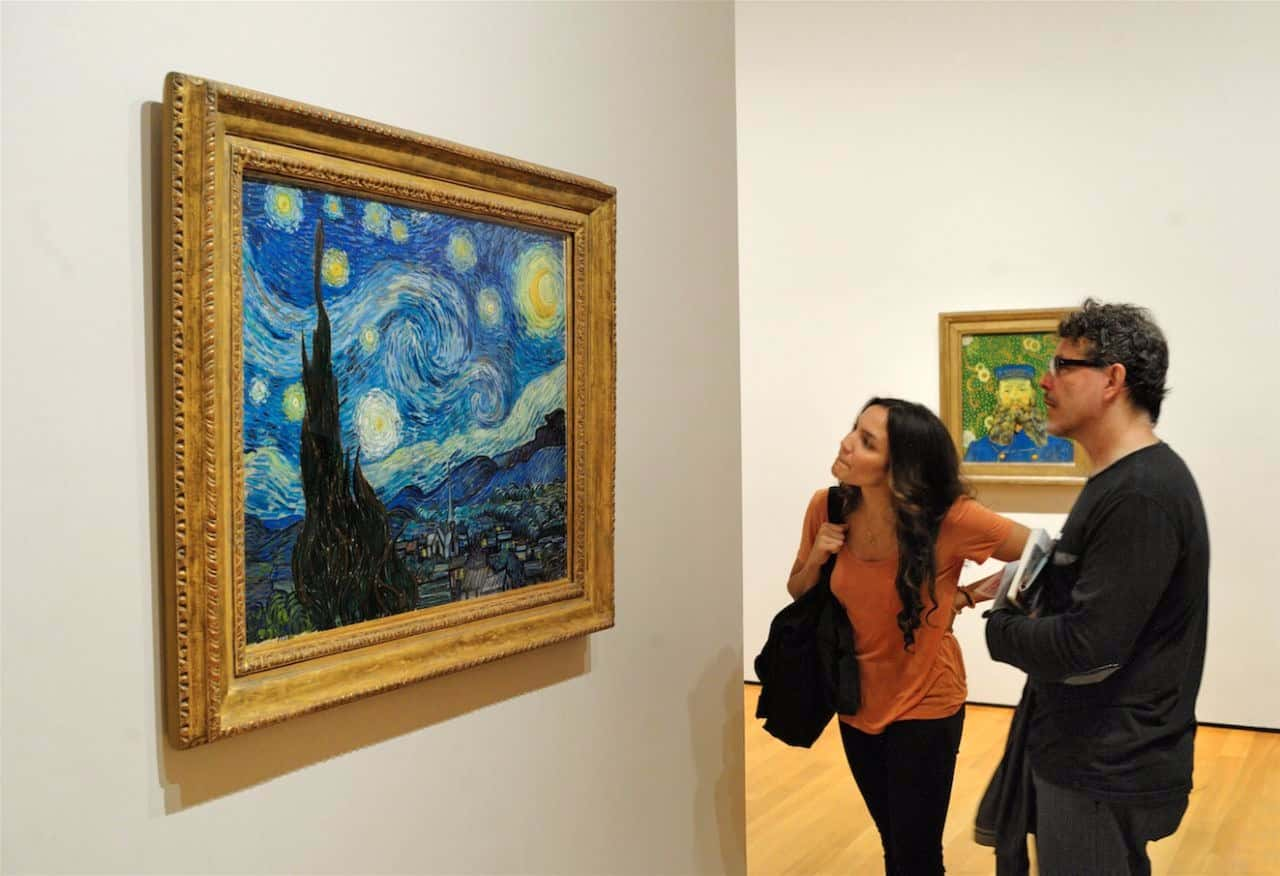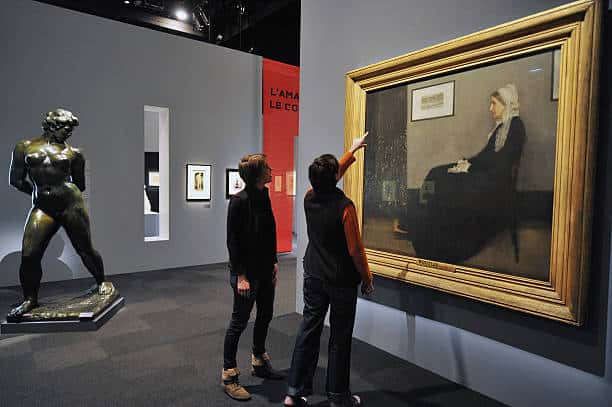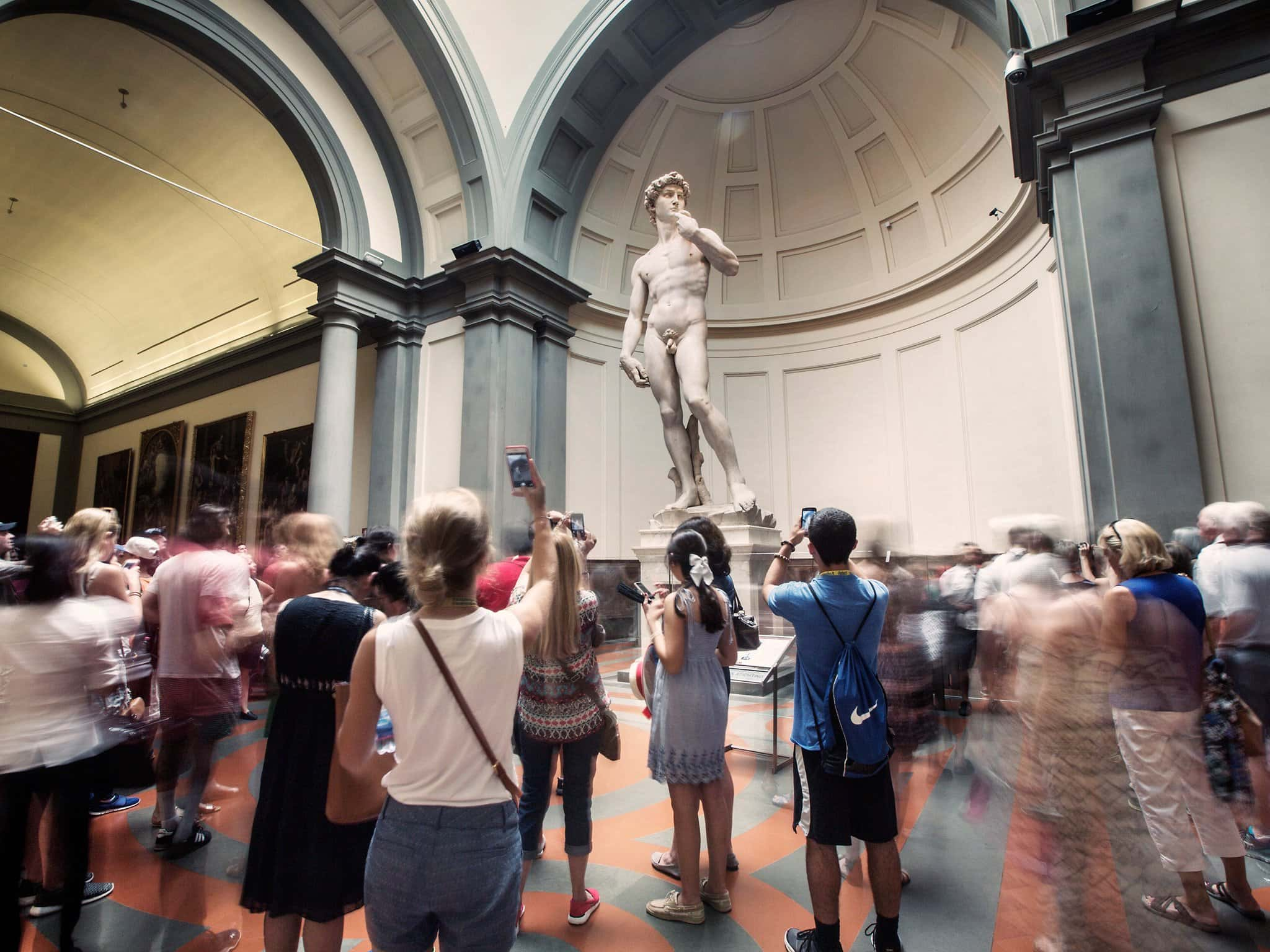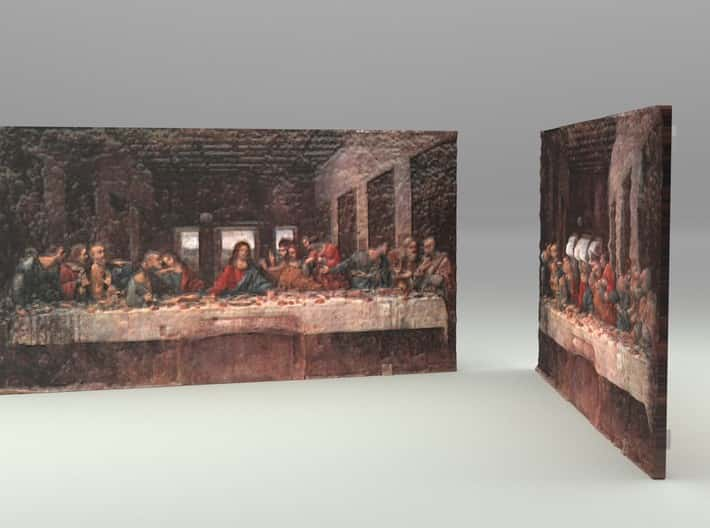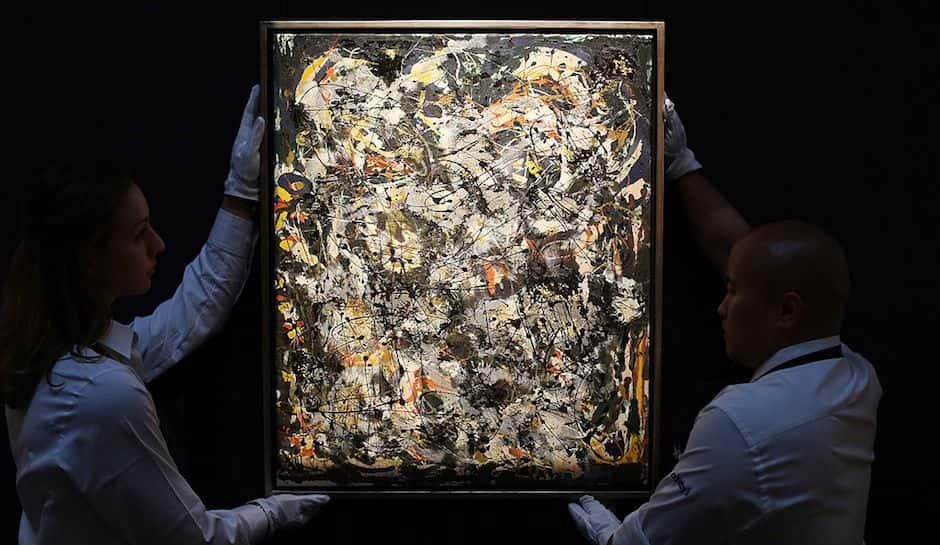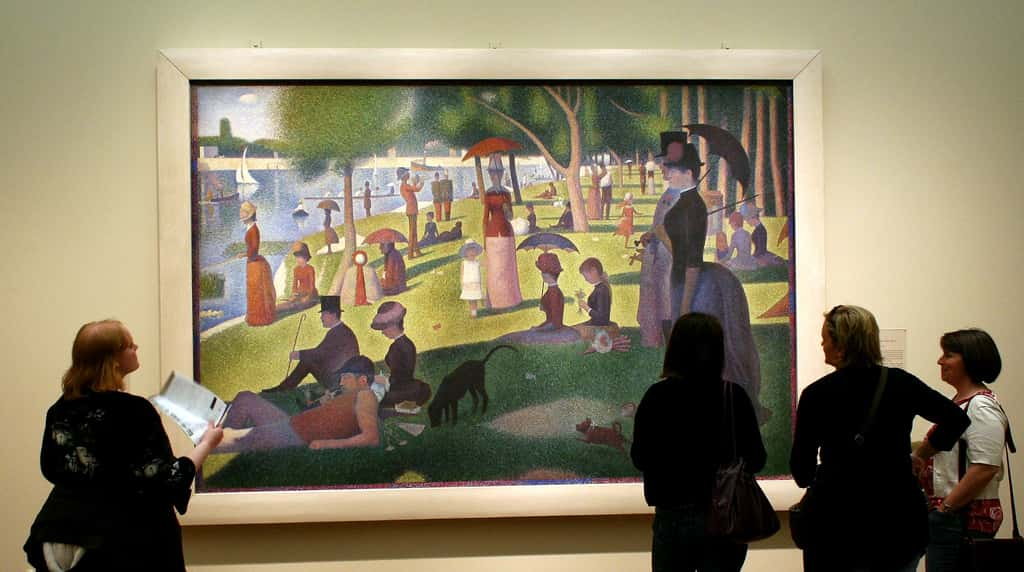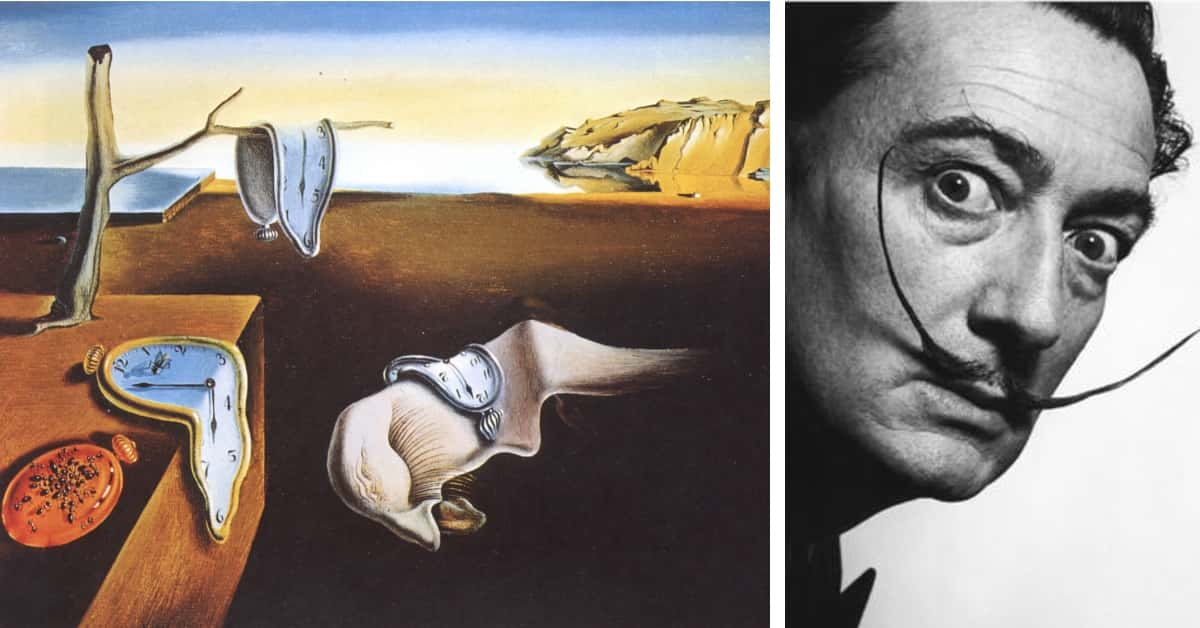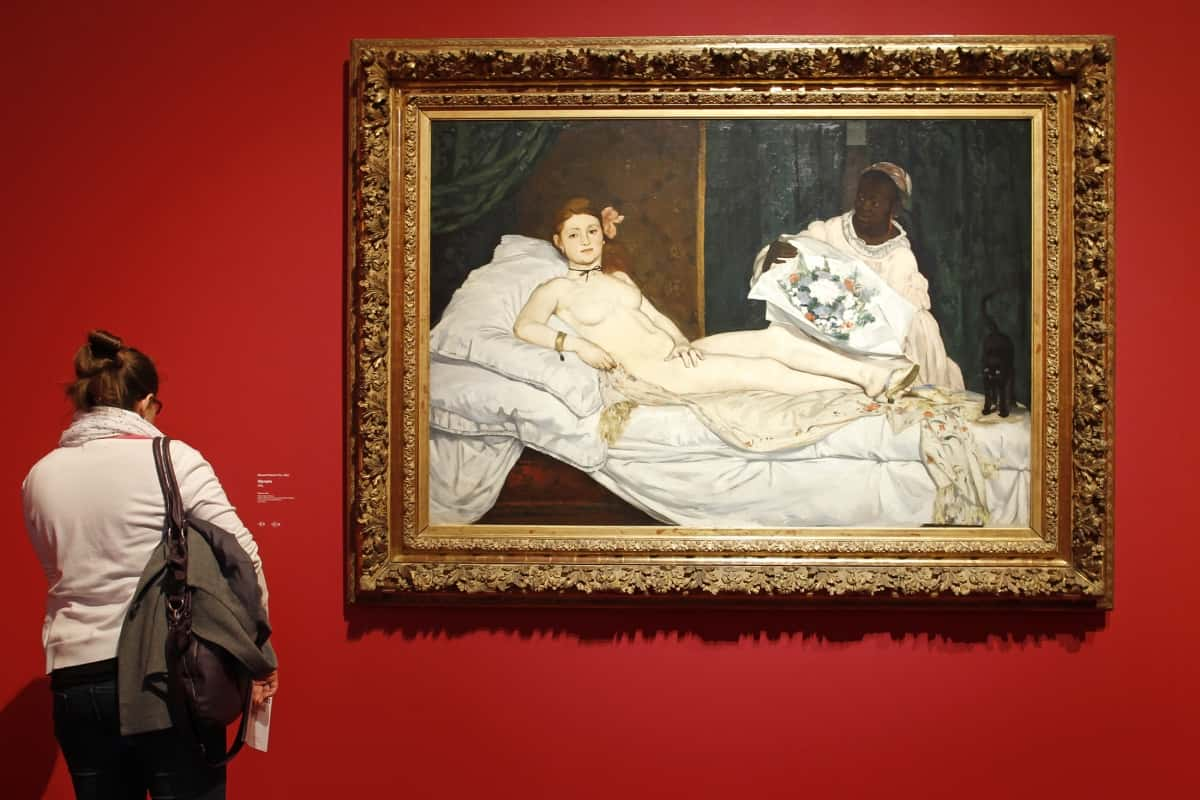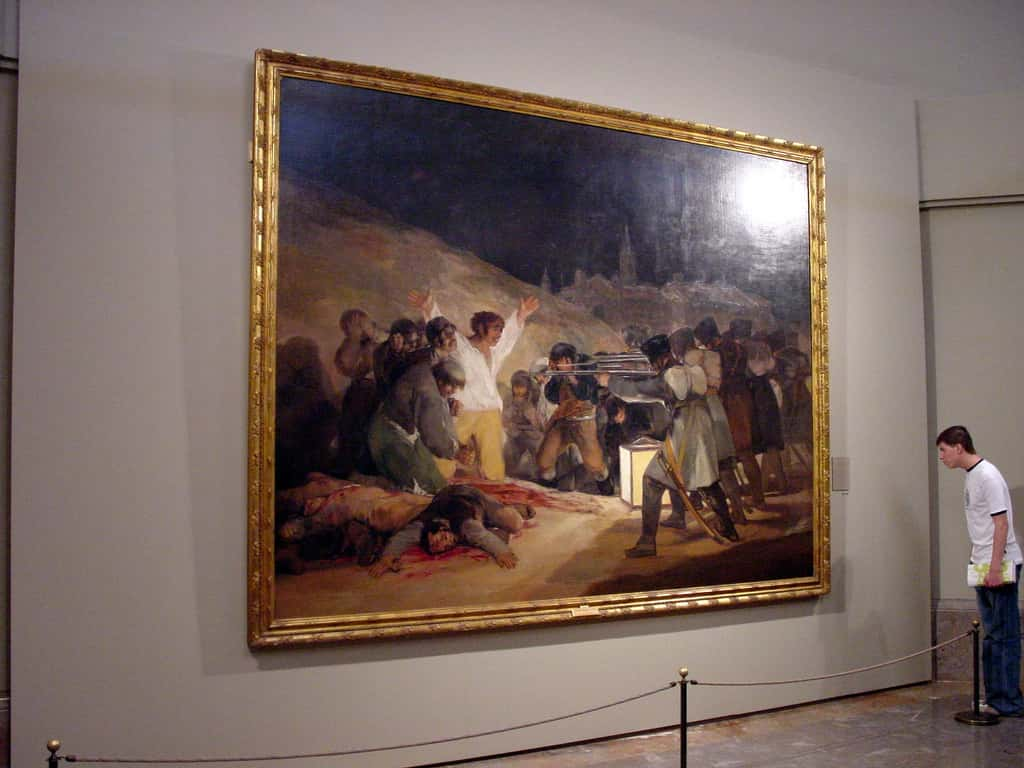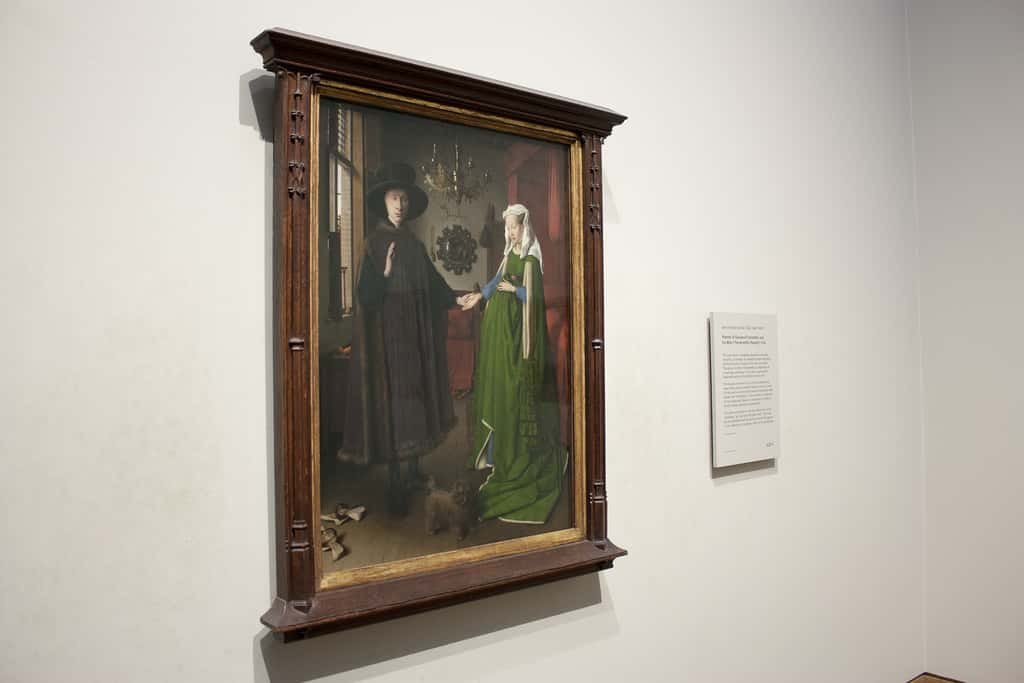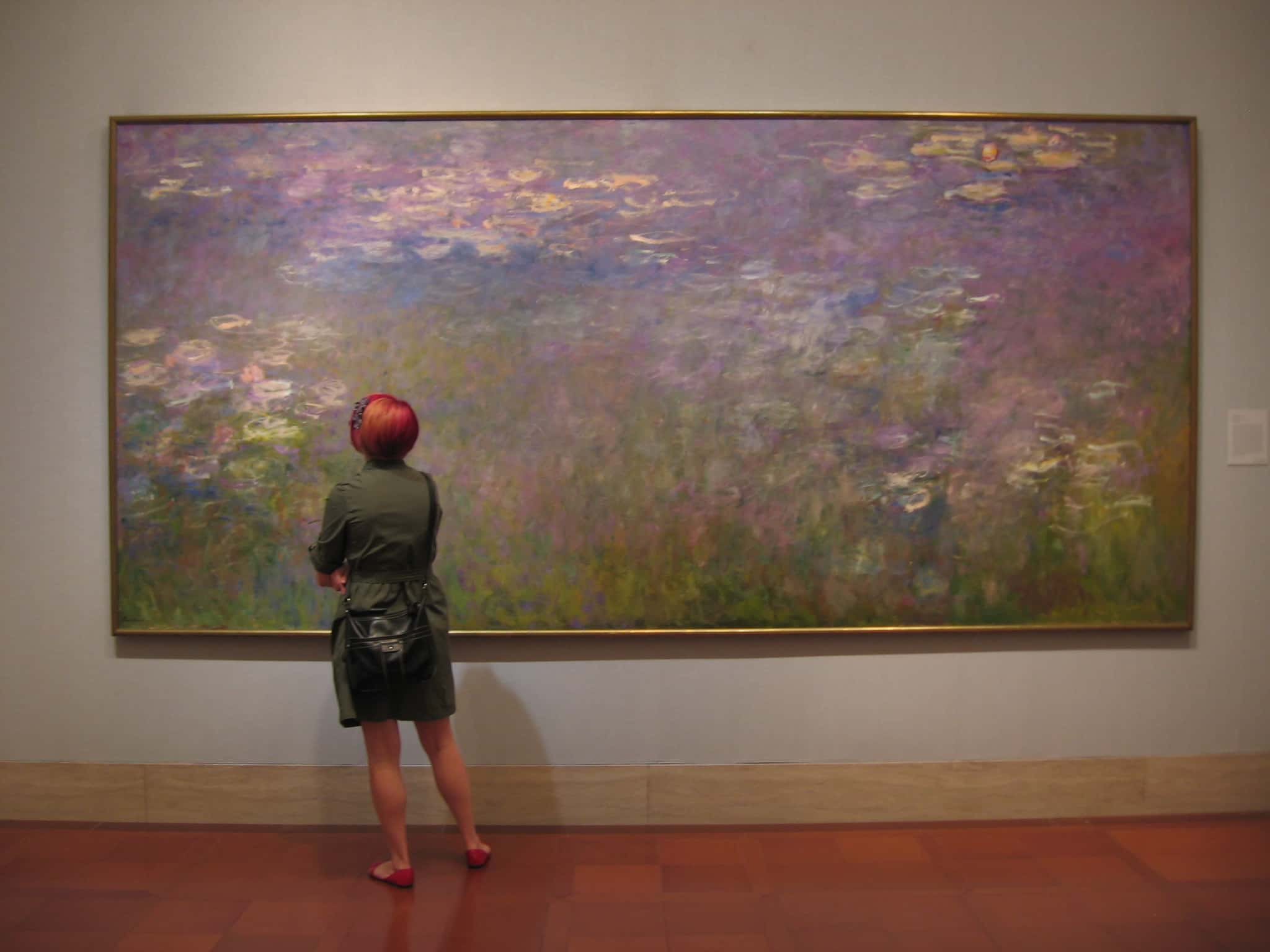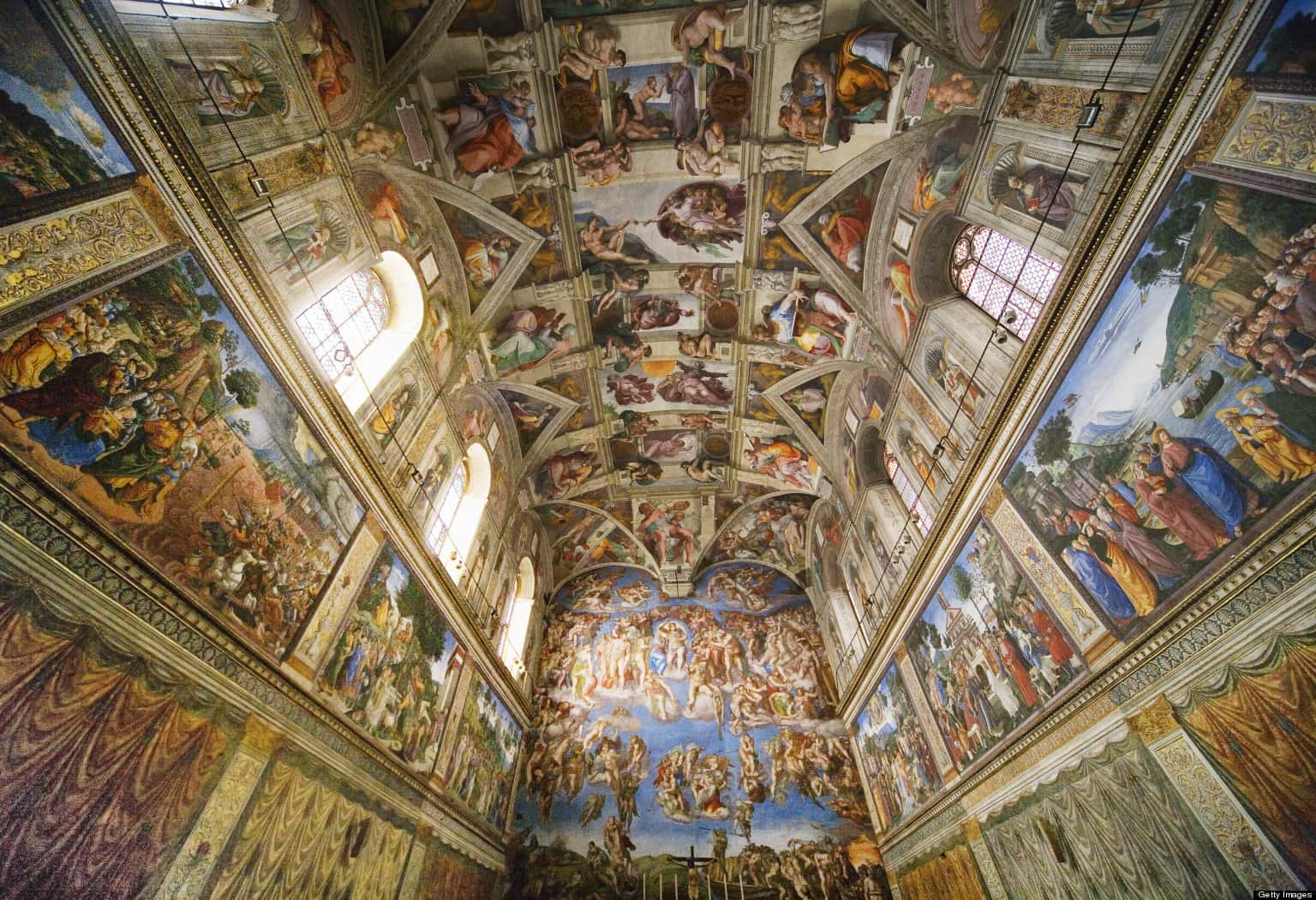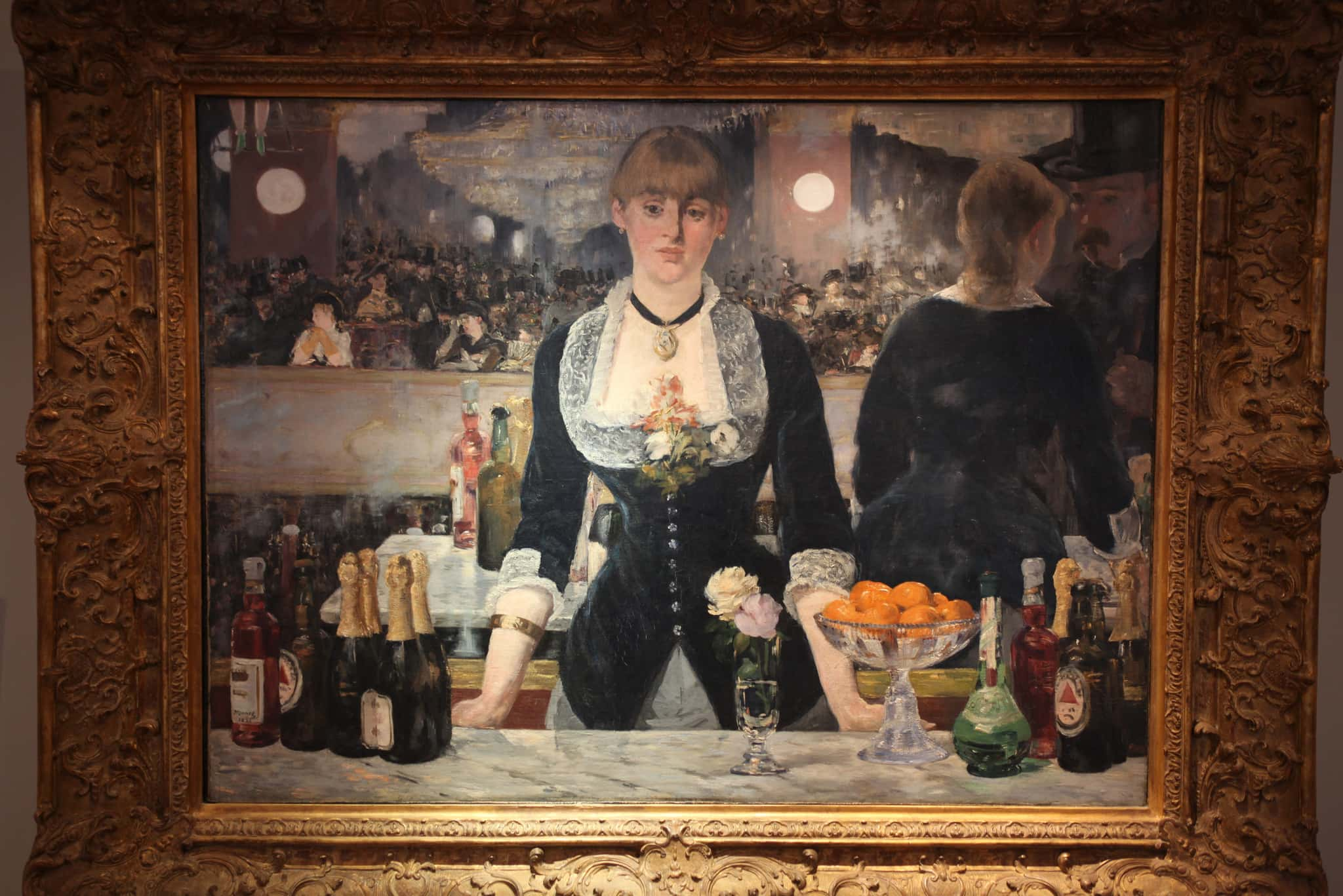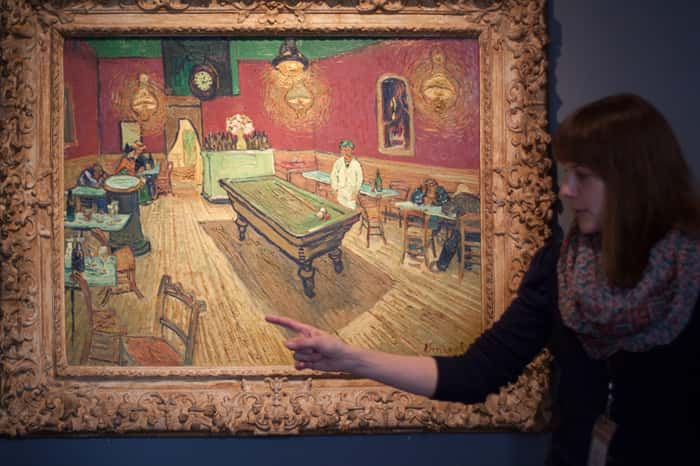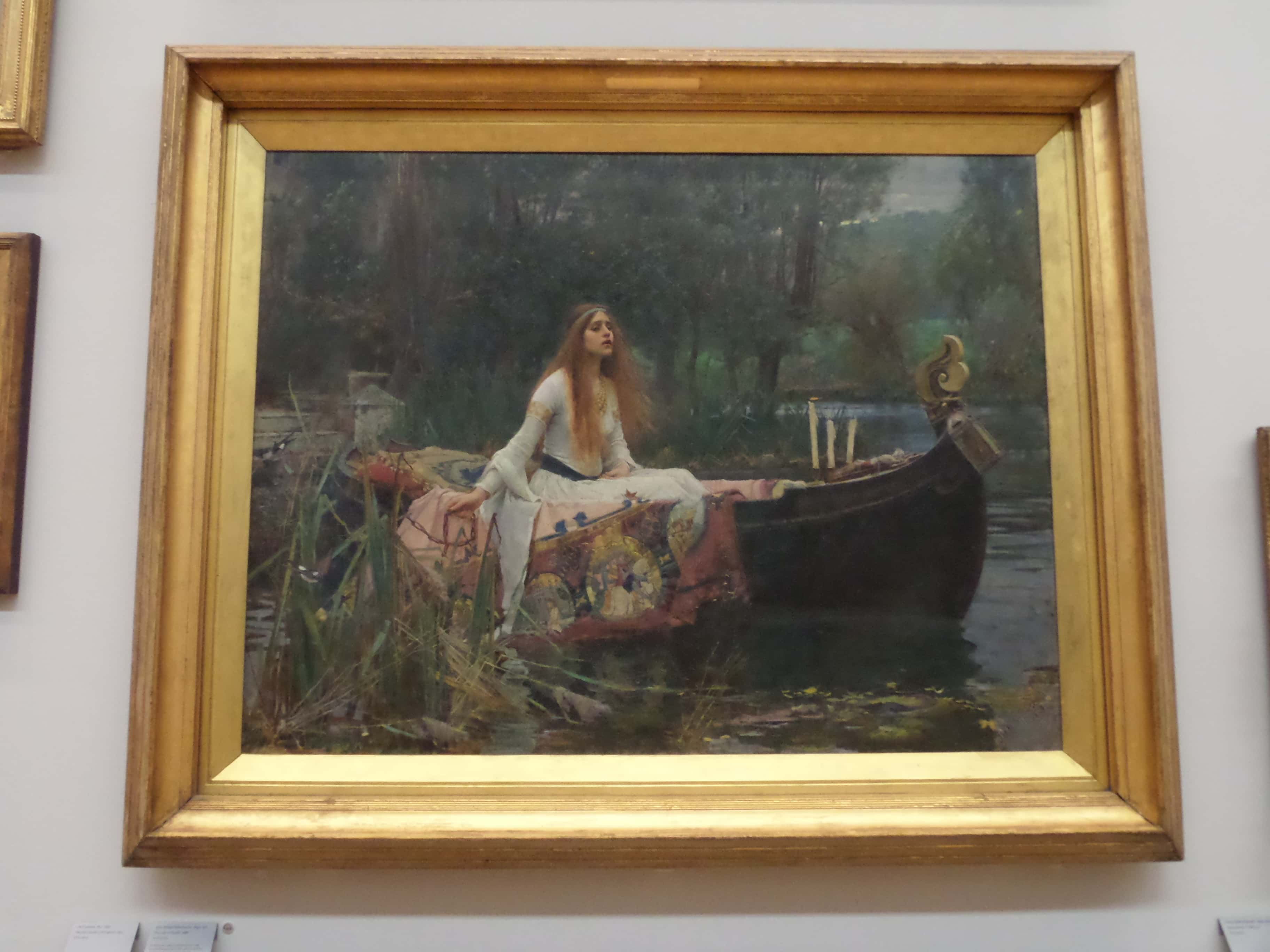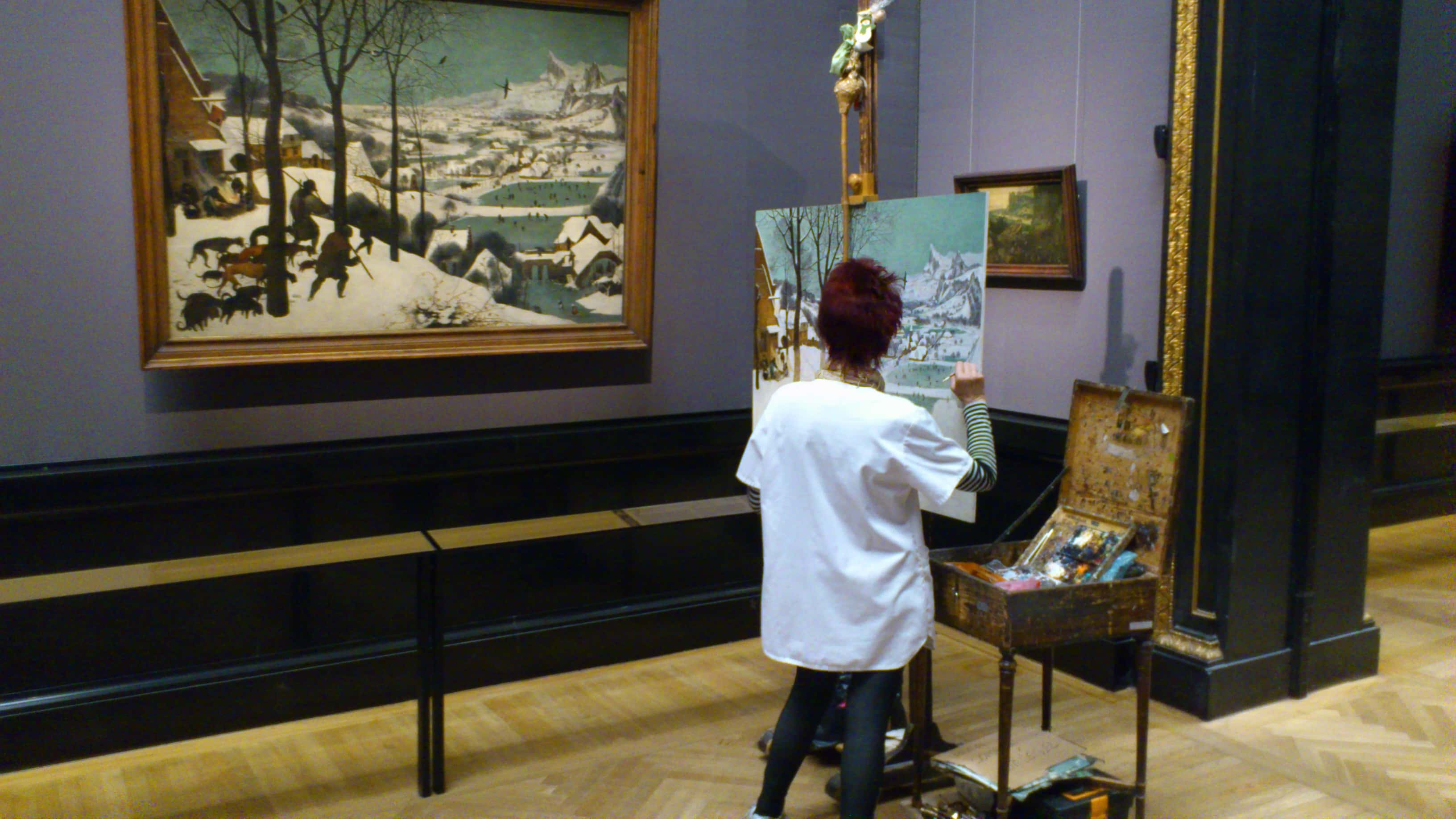Has this ever happened to you? You’re on a date at an art gallery. You want to impress your date, but you don’t know anything about art. Instead of saying something insightful or witty, you just mumble, “Blue is a neat color.” Oof. We want to help! Here are 42 facts about great works of art that will impress even the most discerning gallery-goer.
42. Portrait of Dr. Gachet
Dr. Gachet was Van Gogh’s personal doctor, and was hired to keep his patient's mental illness in check. Van Gogh did not think much of the doctor at first, saying “he is sicker than I am.” A short time later, however, Van Gogh came to view this as a benefit: “I have found a true friend in Dr. Gachet, something like a brother, so much do we resemble each other physically and also mentally.”
41. The Girl with a Tin Earring
Despite its title, at least one art historian insists the earring worn in Johannes Vermeer’s famous The Girl with a Pearl Earring is, in fact, made of polished tin.
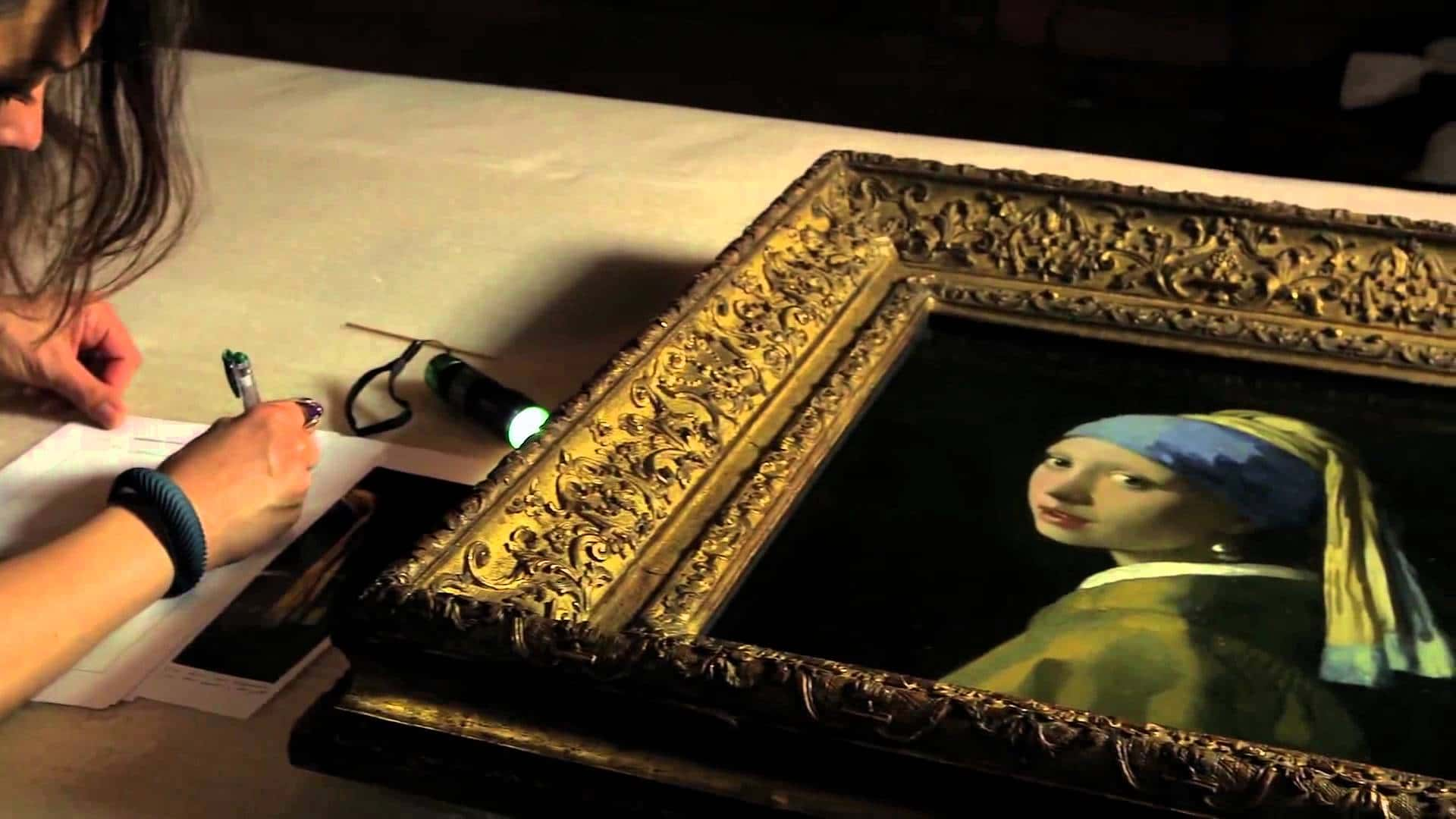 Youtube
Youtube
40. Anything for Art
Theodore Gericault was 27 when he painted The Raft of the Medusa. Gericault was fascinated with the tragic shipwreck that inspired the painting, and he went so far as to borrow a decapitated head from a lunatic asylum, hoping to study the shades of decaying skin.
39. No Touching
Picasso’s Guernica, a powerful indictment of fascism, was so closely associated with anti-war sentiment that during the Vietnam War, protestors would hold vigils in New York’s Museum of Modern Art, where the painting is held. Activist Tony Shafrazi took his protest too far, however, when he defaced the painting, spraying the phrase “KILL LIES ALL” in big red letters across the canvas. Luckily, the painting had been covered in varnish, and no serious harm was done.
38. By the Case
Andy Warhol painted his iconic soup cans on the advice of his friend, Muriel Latow, who advised him to paint “something you see every day.” According to another acquaintance, Warhol soon went out and bought a whole case of "all the soups."
37. Mass Production
Originally called The Poet, The Thinker by Auguste Rodin is one of the most ubiquitous examples of sculpture. This is because there are 28 different castings of the sculpture, many of which were made after Rodin’s death. Rodin would make molds for his sculptures and allow his students to remake them as often as someone wanted a copy.
36. Starry Night
Though not a particularly literal depiction of the night sky, Vincent Van Gogh’s Starry Night is surprisingly accurate. Working with UCLA astronomers, one art historian was able to prove that the scene depicted in the painting is exactly as the sky would have appeared from Van Gogh’s window on the night of June 19, 1889.
35. American Family
One might easily assume the dour-looking couple in American Gothic were father and daughter, or perhaps husband and wife. In truth, the models were artist Grant Wood’s sister, Nan, and his dentist, Byron McKeeby.
34. Whistler’s Mother
Arrangement in Grey and Black No.1, better known as Whistler’s Mother, allegedly happened by accident. When James Whistler’s model failed to show up, he asked his mother to stand in. The model was meant to be standing, but Whistler’s aged mother found the work too exhausting.
33. Digital Culture
The massive wave at the foreground of Hokusai’s famous print The Great Wave off Kanagawa provided the inspiration for a symphony and an emoji. Pretty versatile.
 Youtube
Youtube
32. Nighthawks at the Diner
The restaurant depicted in Edward Hopper’s Nighthawks is something of a holy grail for art fans. Hopper never revealed which restaurant inspired his painting, only that it was on a corner in Greenwich Village. Since then, dozens of people have scoured the village, trying to find the spot where the restaurant may have stood.
31. Mummy?
The eerie character at the foreground of Edvard Munch’s The Scream may have been inspired by a Peruvian mummy. Munch had gone to see the mummy in Paris in 1889.
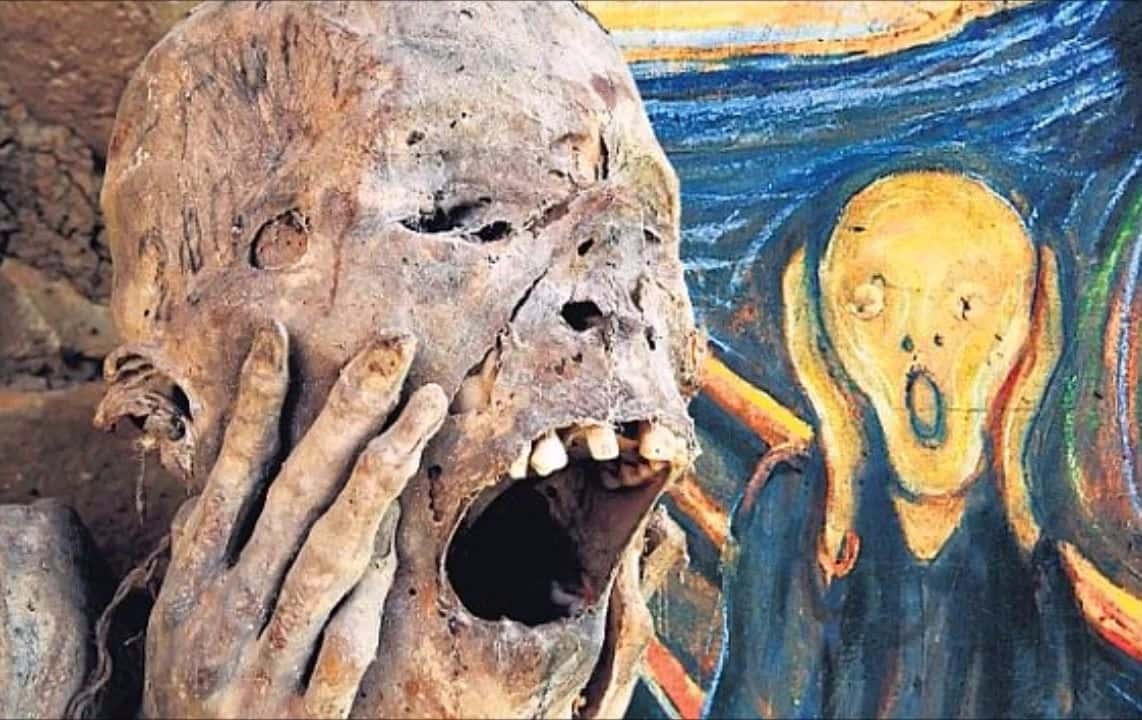 Youtube
Youtube
30. Blockhead
A block of marble once sat in the town square of Florence, abandoned by an artist whose contract had been terminated abruptly. 26 years passed before the town fathers decided to hire someone to sculpt the marble into something. Michelangelo won the job with his proposal for David, narrowly beating out Leonardo Da Vinci.
29. Gold Standard
Have you ever wondered how Klimt’s The Kiss got its brilliant finish? The answer is gold leaf, applied in a technique Klimt adapted from medieval manuscripts and Byzantine mosaics.
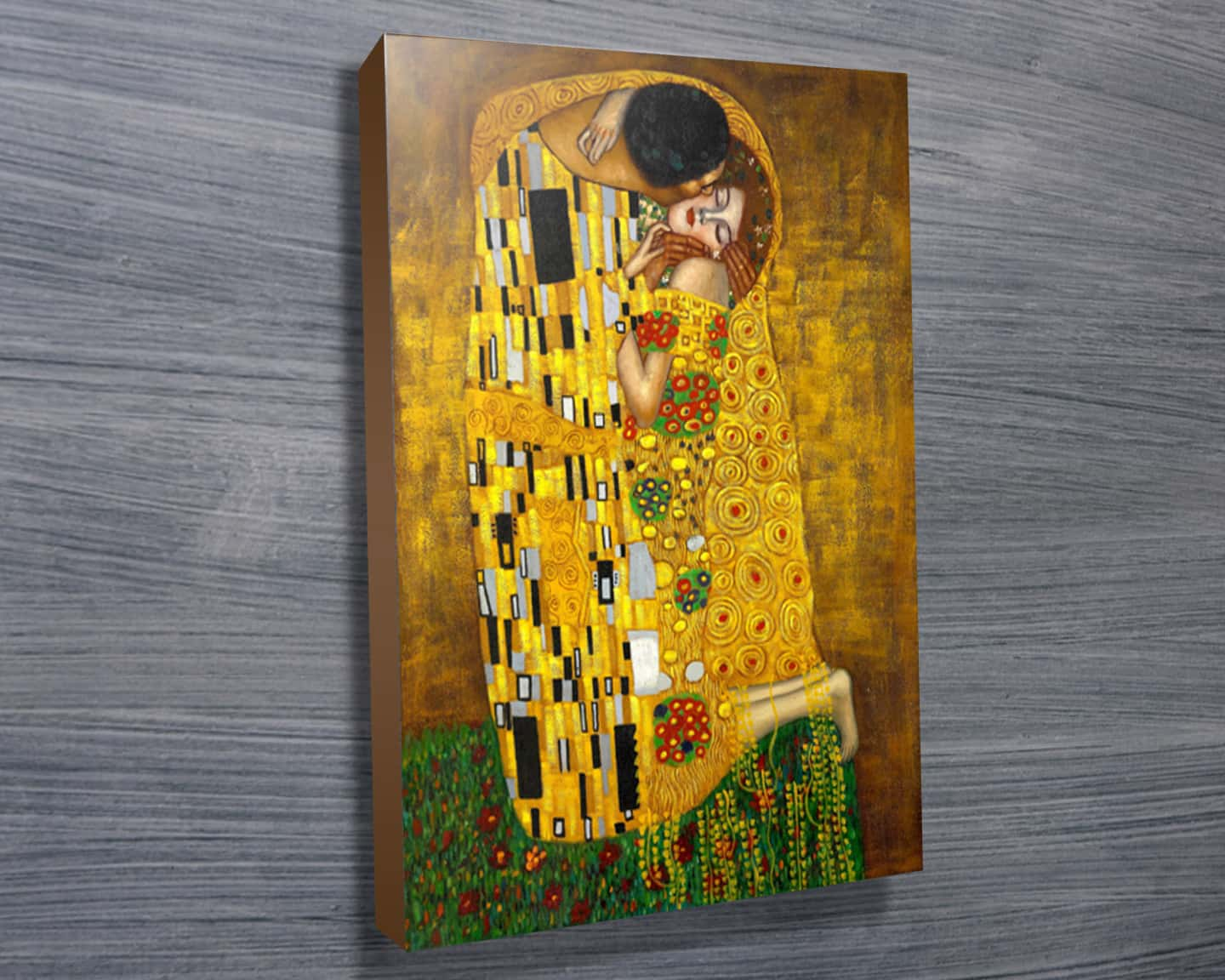
28. The Last Supper
Da Vinci was an expert in depth and perspective, which gives The Last Supper a lifelike quality. But the figures in the painting are realistic as well: Da Vinci scoured the prisons of Milan looking for a suitably untrustworthy model for Judas.
Valued at $140 million, Jackson Pollock’s Number 5 is a painting anybody would want to own. Anybody, that is, except David Martinez. Martinez (a wealthy investment firm manager) and his lawyers have repeatedly denied ownership of the painting, despite reports that Martinez bought it in 2006.
26. Busy Bodies
Georges Seurat’s A Sunday on La Grande Jatte is designed to keep the eye as busy as the riverbank depicted in the painting. It features: three dogs, eight boats, 48 people, and one monkey.
25. Cheesy
Art critics have suggested that the melting clocks in Salvador Dali’s painting The Persistence of Memory were inspired by Albert Einstein, Sigmund Freud, or even mental illness. Dali himself was slightly more mundane: the clocks, he said, were inspired by a wheel of camembert cheese he watched melting in the sun.
24. Olympia
Edouard Manet’s Olympia scandalized Paris when he unveiled the work in 1865. Critics took issue with the irreverent attitude toward classical art and classical mythology. In a seeming mockery of Titian’s Olympia, Manet, they claimed, had painted a Parisian prostitute. Nonetheless, the model for the figure in the painting was in fact Victorine Meurent, herself an accomplished French painter.
23. All in the Details
Few paintings carry as much emotional weight as Francisco Goya’s The Third of May, 1808. The primary figure in the painting, standing before a firing squad with his eyes caught between pity and sadness and his arms stretched out from his shoulders, has been identified as a Christ-like figure. This symbolism becomes even more overt upon closer inspection: Look closely at the man’s hands and you will find scars, as if his hands had been pierced by nails.
22. Don't Ask Her if She's Pregnant
Even though Jan van Eyck's painting is often called The Arnolfini Wedding, the two figures depicted in The Arnolfini Portrait had, in fact, been married for some time before having their portrait done. Likewise, the woman in the painting is not pregnant, as is often thought; she is just wearing a very full skirt.
21. Water Lilies
The titular water lilies in Monet’s famous painting came from his own small pond in Giverny, France; he had them specially imported from Egypt and South America. When the Giverny town council heard about this, they were incensed, certain that the foreign florae would spread and poison the town drinking water.
20. The Creation of Adam
The Creation of Adam is the centrepiece of Michelangelo’s Sistine Chapel ceiling. Lately, some people have begun to take notice of a possible hidden meaning in the painting. Notice the rose-coloured shape from which God reaches: it’s shaped strangely like a human brain. Was this Michelangelo’s tribute to humanity’s–and his own–creative genius? Even more intriguing, some have taken the argument in a new direction, arguing that the shape is also very similar to a uterus.
19. La Primavera
The figures of Sandro Botticelli's La Primavera are dancing in an orange grove. The orange tree was, fittingly, the symbol of Botticelli’s patrons, the Medici.
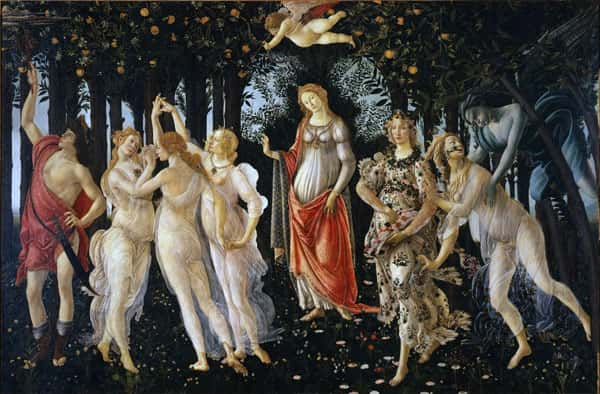
18. Folies-Bergère
Manet’s A Bar at the Folies-Bergère is a massive piece, and full of tiny, interesting details (did you notice the trapeze artist in the top left corner?). But one detail wasn’t revealed until the painting had been subjected to an x-ray scan. In an earlier draft of the painting, Manet had painted the barmaid with her arms crossed. What made him change his mind?
17. Self-Esteem Issues
The garishly-coloured Night Café is worth almost $200 million. That didn’t stop Van Gogh from calling it “one of the ugliest pictures I have done.”
16. Literary Landscape
Inspired by a well-known Greek myth, Pieter Bruegel the Elder’s Landscape with Fall of Icarus in turn inspired another famous work of art, W.H. Auden’s poem “Musée des Beaux-Arts.”
15. The Lady of Shalott
Such conversations between art and literature are common. Just as Bruegel’s painting inspired Auden’s poem, John William Waterhouse’s painting The Lady of Shalott was inspired by a poem from Lord Alfred Tennyson.
14. Jeanne Hébuterne
Amedeo Modigliani's Jeanne Hébuterne (Au Foulard) (1919) was one of many depictions of the painter Jeanne Hébuterne by Modigliani. The two artists were tragic soulmates: They had a daughter together, and were expecting a second when Modigliani died of tuberculosis. Hébuterne, distraught, killed herself two days later.
13. Up Close and Personal
Rembrandt's The Anatomy Lesson of Dr. Nicolaes Tulp was a sort of class portrait. The figures depicted in the painting were real students, and the cadaver was a recently executed thief named Adriaen Adriaenszoon.
12. Washington Crossing the Delaware
Emanuel Leutze’s portrait of George Washington crossing the Delaware River is certainly inspiring, but it's full of inaccuracies, and was painted in Germany 75 years after the event. The flag beside Washington, for example, wouldn’t come into existence until a year after the crossing.
11. Hunters in the Snow
Bruegel’s Hunters in the Snow was painted in 1565. Still, the scene would be recognizable to many modern viewers: If you were to look very closely at the skaters in the background, you can see the villagers playing what looks like a primitive form of hockey.
10. Lunch Time
Victorine Meurent, whom you might remember as the model for Olympia, must have been Manet’s favourite model: she also has a starring role in his Le Déjeuner sur l’Herbe as the female picnicker.
9. Christina’s World
Anna Christina Olson struggled with a degenerative disease that made it impossible to walk. Andrew Wyeth, the story goes, was inspired by her courage and strength when he saw her dragging herself across a field toward her home in South Cushing, Maine, and his famous Christina's World depicts this event. That’s the official story. In truth, though he may have been inspired by Christina, Wyeth had his wife stand in as a the model for the painting.
8. Day Watch?
Though the official title of Rembrandt's painting is The Legend and the Man, most people refer to it as The Night Watch, and continue to do so even though the figures in the scene are not even on a watch. Moreover, the scene doesn’t take place at night: Centuries of varnish and dust darkened the canvas.
 Sky scraper city
Sky scraper city
7. Venus de Milo
Not only did the Venus de Milo have arms once upon a time, she also used to be adorned with metal jewellery.
6. Written in Blood
Michelangelo da Caravaggio did not normally sign his work. Indeed, The Beheading of John the Baptist is the only surviving signed Caravaggio. Even more unusual, the artist opted have his name spelled out with John the Baptist’s flowing blood.
5. Photobomb
Diego Velazquez’s Las Meninas depicts a five-year-old girl (the infanta of Spain), as well as various members of the royal house. Also included: Velazquez himself, in what one critic has called “history’s first photobomb.” All the figures are staring back at the viewer with surprise–very meta.
4. Beg Forgiveness
In 1972, a man named Laszlo Toth attacked Michelangelo’s masterpiece Pieta, breaking Mary’s nose, eyelid, and arm with a hammer. As he did, he cried “I am Jesus Christ—risen from the dead.” He was never charged with a crime, but sent to an asylum, and then deported from Italy to his native Australia. The damage inflicted however, did allow restorers to discover a small “M," apparently Michelangelo's secret signature.
3. Ceci N'est Pas Une Flag
Despite being an inexact copy, critics were unsure if Jasper Johns’ Flag was a painted flag or a painting of the flag. When asked, Johns’ "clarified" by simply saying, “both.”
2. The Theft of the Mona Lisa
Although the Mona Lisa is one of the most famous and heavily guarded paintings in the world, a man once managed to steal it simply by taking it off the wall. When the most famous painting in the world, Leonardo Da Vinci's Mona Lisa, went missing in 1911, French police immediately had a suspect: Avant-Garde poet Guillaume Apollinaire. Apollinaire's totally unknown and so not talented friend Pablo Picasso was also brought in for questioning.
The real perpetrator was Vincenzo Peruggia. According to Peruggia's interrogation after his arrest, he entered the museum through the door where other Louvre staff were entering. He said he wore one of the white smocks that museum employees customarily wore and was indistinguishable from the other workers. When the Salon Carré, where the Mona Lisa hung, was empty, he lifted the painting off the four iron pegs that secured it to the wall and took it to a nearby service staircase. There, he removed the protective case and frame. He said he took off his smock and wrapped it around the painting, tucked it under his arm, and left the Louvre through the same door he had entered.
Peruggia's goal was to return the painting to its "homeland" in Italy. He contacted Giovanni Poggi, director of the Uffizi Gallery, who authenticated the painting and convinced Peruggia to let him hang onto it for safe keeping. Poggi then contacted the police.
Although the painting was widely known before the theft, it is believed the theft help reinvigorate public interest in the Da Vinci masterpiece.
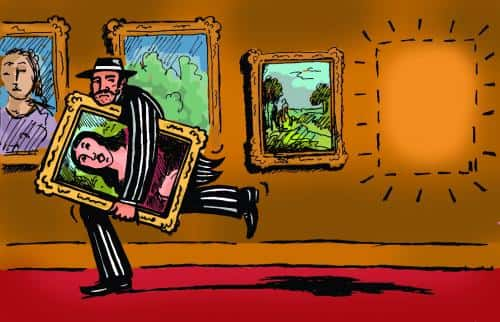
1. Salvator Money
This is supposed to be a list of priceless works of art. However, in the art world, “priceless” really means whatever someone is willing to pay at auction which can be very, very expensive. In 2017, Salvator Mundi, attributed to DaVinci, sold for $450.3 million, the largest sum ever paid for a painting.
Sources: 1, 2, 3, 4, 5, 6, 7, 8, 9, 10, 11, 12, 13, 14, 15, 16, 17, 18, 19, 20, 21, 22, 23, 24, 25, 26, 27, 28, 29, 30, 31, 32, 33, 34, 35, 36, 37, 38, 39, 40, 41, 42, 43



